Long before telescopes and space probes, the night sky was pure mystery and sometimes pure terror. When the moon turned blood-red or fireballs streaked across the heavens, ancient people panicked, prayed, and sometimes even packed up and fled. In this article, we’ve listed the wildest moments the sky freaked people out.
Halley’s Comet – 1066 AD (England and Europe)
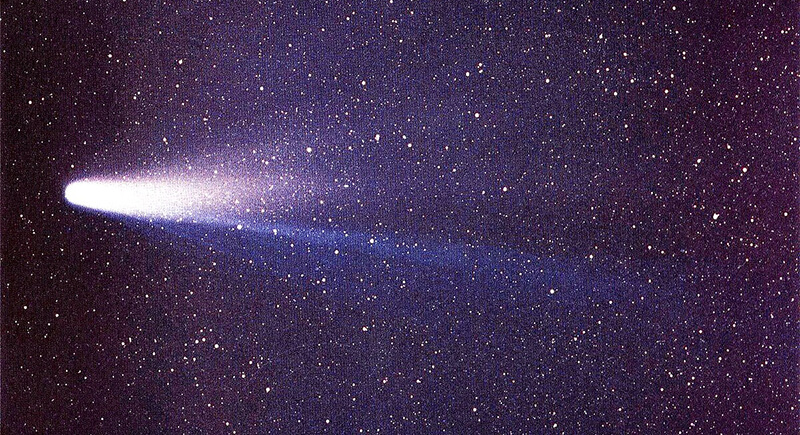
In 1066, Halley’s Comet blazed across the sky like a cosmic exclamation point. The comet’s sudden, fiery appearance sparked panic across the continent. King Harold II saw it as a bad omen in England just months before the Norman invasion. Over in Normandy, William the Conqueror took it as a sign of destiny.
The Red Sky of 1770 – Japan and China

For nine eerie nights in 1770, skies over Japan and China glowed blood-red. It was so bright that people claimed they could read at midnight. Ancient records from Kyoto mention terrified villagers performing emergency rituals to ward off disaster. Turns out, the real culprit was an extreme geomagnetic storm.
The Great Lisbon Comet – 1556 AD (Europe)
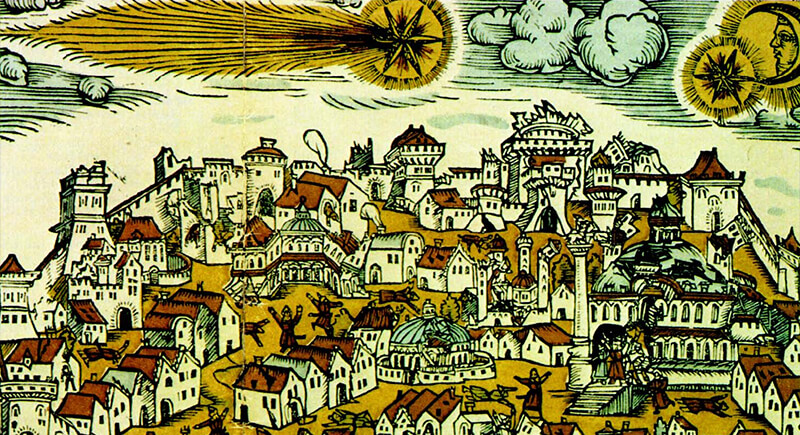
When the Great Lisbon Comet lit up Europe’s sky in 1556, it was a moment of sheer dread. Without a scientific explanation, many viewed it through the lens of prophecy, often associating such celestial events with wars, plagues, or shifts in power. Historians now call it the Great Comet of 1556, but to those who saw it then, it was simply one more sign that the world was changing—and not necessarily for the better.
The Eclipse of Thales – 585 BC (Lydia and Media)
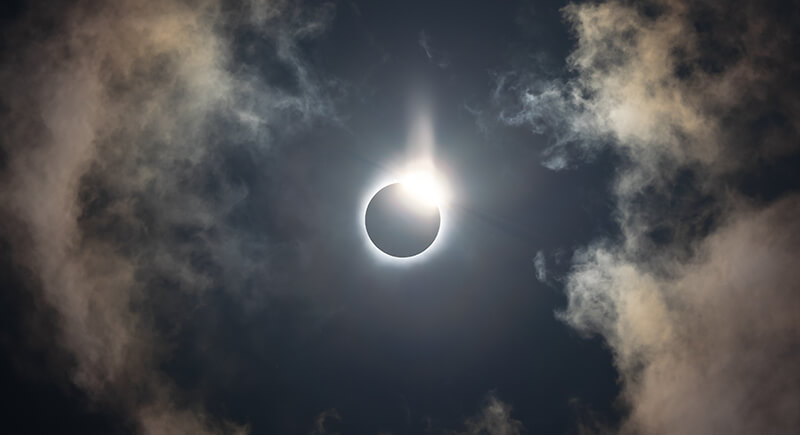
In 585 BC, a sudden midday darkness interrupted a battle between the Lydians and the Medes. The event was so shocking that both sides dropped their weapons and called a truce. To ancient armies locked in combat, the vanishing sun looked like a divine warning.
The Great Comet of 1680 – Europe and the Americas

The Great Comet of 1680 got people grabbing their Bibles. With its massive tail visible even during the day, the comet caused widespread panic across Europe and the American colonies. Its fiery glow and unnerving brightness convinced many that judgment had arrived—through a very dramatic light show.
The Comet of 44 BC – Death of Julius Caesar (Rome)

Just months after Julius Caesar’s assassination, a bright comet lit up the Roman sky for seven days, and people lost it. It was seen during games held in his honor, and the comet was quickly declared the “Divine Star,” proof that Caesar had ascended to the heavens.
The 1456 Comet and the Fall of Constantinople (Europe)

A blazing comet tore across the European sky in 1456 before trailing fear and superstition in its wake—right on the heels of Constantinople’s devastating fall to the Ottomans just three years earlier. For a world deeply rooted in religious meaning, the night sky seemed to echo the crumbling of empires.
The Aurora of 1859 – Global
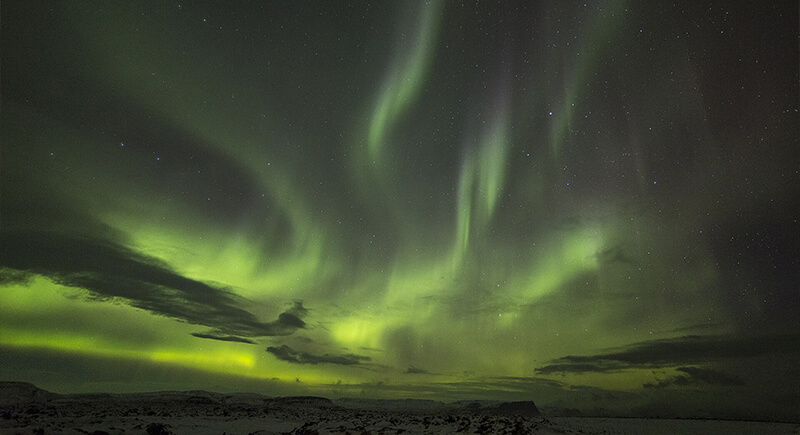
It looked like the sky was throwing a light show—and nobody had invited it. The 1859 solar storm lit the planet with bright auroras, and people in Rome thought the city was on fire. Telegraphs shocked operators and sparked into flames, even when disconnected.
The Great Meteor Storm of 1833 – United States
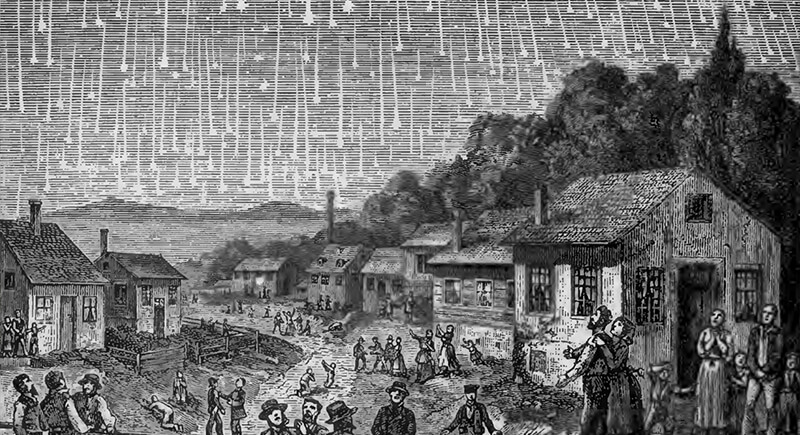
In the early hours of November 13, 1833, North America literally lit up like the sky was falling. An estimated 100,000 meteors per hour rained down. For many, especially in the American South, it felt like the apocalypse. Slaves reportedly begged for freedom, and preachers warned of the Second Coming.
The “Dancing Sun” of 1917 – Portugal (Fatima)
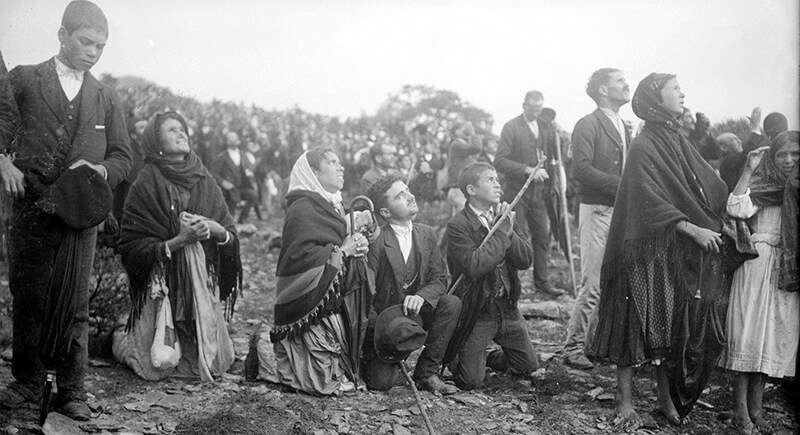
Tens of thousands had gathered in Fatima expecting a miracle—and they swear they got one. On October 13, 1917, witnesses claimed the sun began to spin, pulse, and zigzag in the sky. Many fell to their knees, convinced it was divine proof of the Virgin Mary’s prophecy.
The Disappearing Moon – 1504 (Jamaica)

Stranded in Jamaica and desperate for supplies, Christopher Columbus warned the indigenous Arawak people that his god would make the moon disappear in anger if they didn’t help. Right on cue, the eclipse darkened the sky, and panic spread. Lucky for him, he had read the eclipse date in advance.
The Comet of 1811 – Napoleonic Era (Europe)
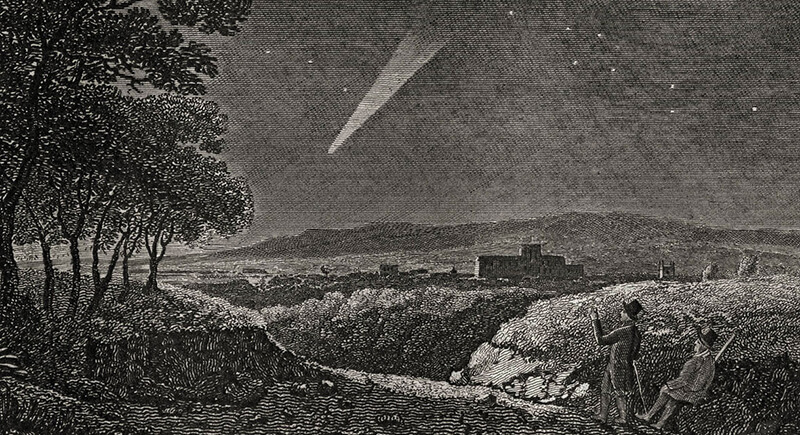
The comet was visible for nearly a year—long enough to earn the nickname “Napoleon’s Comet.” It became tangled in the public imagination and blamed for everything from lousy wine harvests to earthquakes. Across Europe, it was seen as a sky-born omen as Napoleon’s empire loomed large.